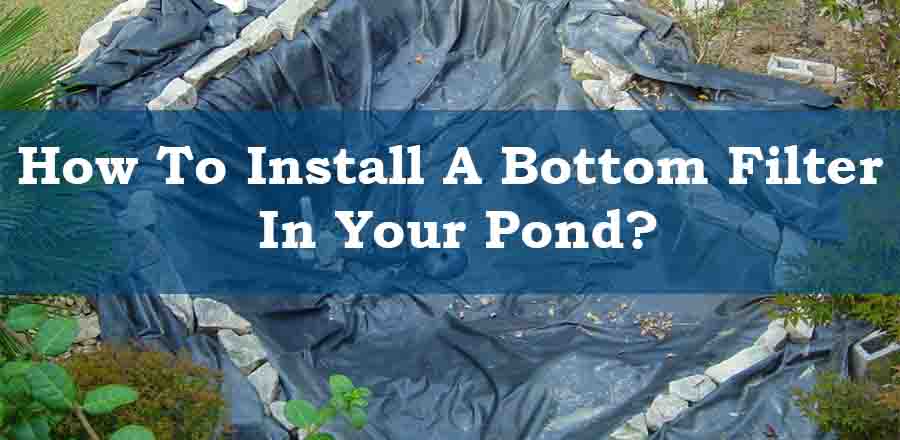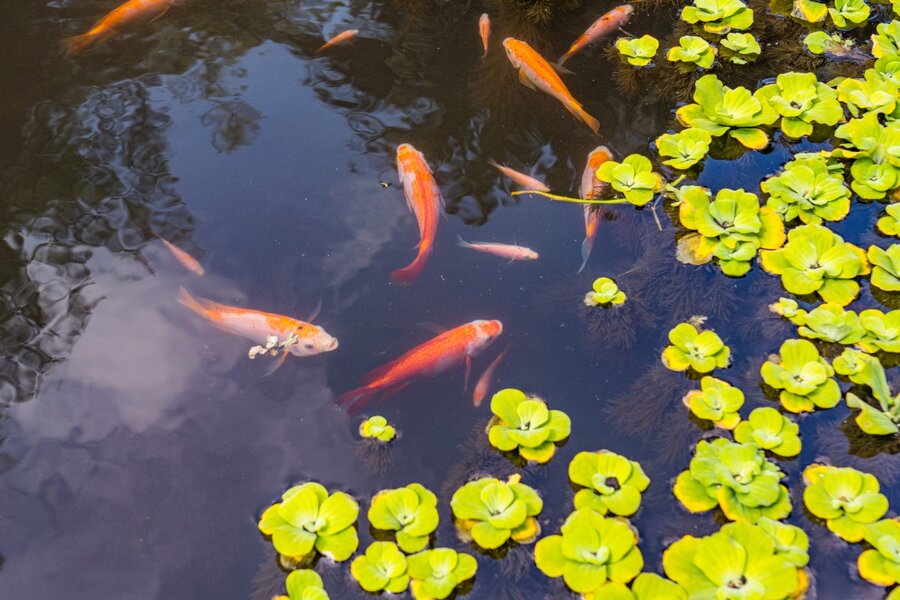Pond filters are expensive and sometimes difficult to manage because of climate change. Maintaining pond water without a filter is not a difficult task. There are many alternative ways to naturally keep the water clean.
Excessive sunlight, Ammonia, Nitrite, and Nitrate produced by fish wastes are mainly responsible for unclean, polluted, and smelly water. It leads to killing the fish, plants, and good bacteria of the pond water. Many pond keepers ask questions like how to maintain a pond without a filter and how to keep pond water clear without a filter.
In this guide, the answers to the question will be described in detail. So let’s get started.
Table of Contents
Balanced Stock of Fishes
A pond keeper should always keep a balanced stock of fish in the water to maintain the water quality of the filter. A lot of fishes produces a lot of waste materials. Waste materials and leftover foods from fish create ammonia which is toxic to the ecosystem of the pond. The number of fish should be balanced with the size of the pond water. It helps to keep the pond water naturally clean.
Changing Water Regularly
When you do not have any pond filter, you need to clean your pond water manually. Cleaning a pond means removing the leftover foods, algae, debris, rotting plants, waste materials, etc. from the water. These waste materials release a lot of ammonia which causes the death of fishes, good bacteria, and aquatic plants. So, changing the water regularly is very important.
Avoiding Overfeeding Fishes
Overfeeding the fish is a bad practice. When you spoil your fish with a lot of food they release a lot of waste materials or sometimes fish cannot consume a lot of food. Then the leftover foods pollute the water.
Waste materials and leftover fish foods release toxic Ammonia, Nitrite, and Nitrate. These toxins produce blooms of Algae and kill the fish in the water. So pond keepers should always try to avoid overfeeding their fishes. They should also avoid foods that contain phosphate. It will help them to keep the pond water clean without the filter.
Using UV Sterilizer
Algae pollute the pond water in many ways. It creates a suffocating environment inside the water. Thus fishes and aquatic plants die. It also creates a bad smell in the water. To solve this problem a pond keeper can use a UV sterilizer.
UV Sterilizer helps to keep your pond free from algae blooms. Sunlight helps the algae to bloom and multiply. UV Sterilizer keeps the pond algae free by neutralizing the sunlight. So, if you have a filterless pond you should utilize UV Sterilizer to keep your water algae free.
Having Correct Aquatic Plants
Many submerged aquatic plants keep the water clean by absorbing the toxins produced by waste material and leftover foods of fish. On the other hand, many floating aquatic plants create a layer on the pond water surface and do not let the sunlight enter the water.
So the growth of algae reduces and the pond water remains clean and smell-free. So keeping these aquatic plants in a filterless pond is very important.
Using Media Reactors and Pond Dye
These are some new technology to keep the filter less pond water clean. A Nano media reactor is a new technology that works as a filtration system. It destroys the ammonia, nitrite, and nitrate from the water. It also helps to control the growth of the algae.
On the other hand, there is another technology called pond dye. This is specially used to control the growth of the algae. It blocks the sunlight and keeps the pond water algae and smell-free.
Aeration of Pond
Pond aeration is a method of providing oxygen to the fishes and keeping the water clean. It improves the number of beneficial bacteria in the pond. These good bacteria break the waste materials and muck of the pond water.
Aeration also creates a movement to the surface of the pond water that helps to destroy the mosquitos’ eggs. It also reduces the production of algae.
Using Debris Removal
Debris is produced both on the surface and the bottom of the pond water. If you are not using a pond filter, you must remove the debris. Debris can easily pollute the water by turning it into sludge. Sludge reduces the oxygen inside the pond water and causes water clarity problems.
Debris can be removed by using a pond vacuum. It sucks the debris and sludge from the pond water. It also controls the pond algae and reduces excess nutrients.
Beneficial Bacteria
Good bacteria help to maintain the nitrogen level of the pond. If you don’t have any pond filter for your pond, you should maintain the ecosystem of good bacteria. Good bacteria break the waste of the pond water into ammonia. Then, ammonia is broken down into nitrite and nitrate. Nitrite and nitrate can easily be absorbed by aquatic plants.
The number of beneficial bacteria can be increased by providing bacteria substrate inside the pond water. Increasing the oxygen level inside the pond by aeration is also a good option.
Using Netting
Pond netting works as a barrier to the debris. It is set up on the surface of the pond water. It catches all the debris and solves the sludge problem. After that, all the debris can be removed manually from the pond net using a pond vacuum.
Using Barley Straw
Barley straw is a great way to keep the pond water algae-free. It reduces the growth of the algae which makes the water dirty and smelly and keeps the water clean.
If you follow the above methods properly, you will be able to maintain a healthy fish pond without using a filter. These methods are easy and effective. Many pond keepers used these methods and got a good result.

